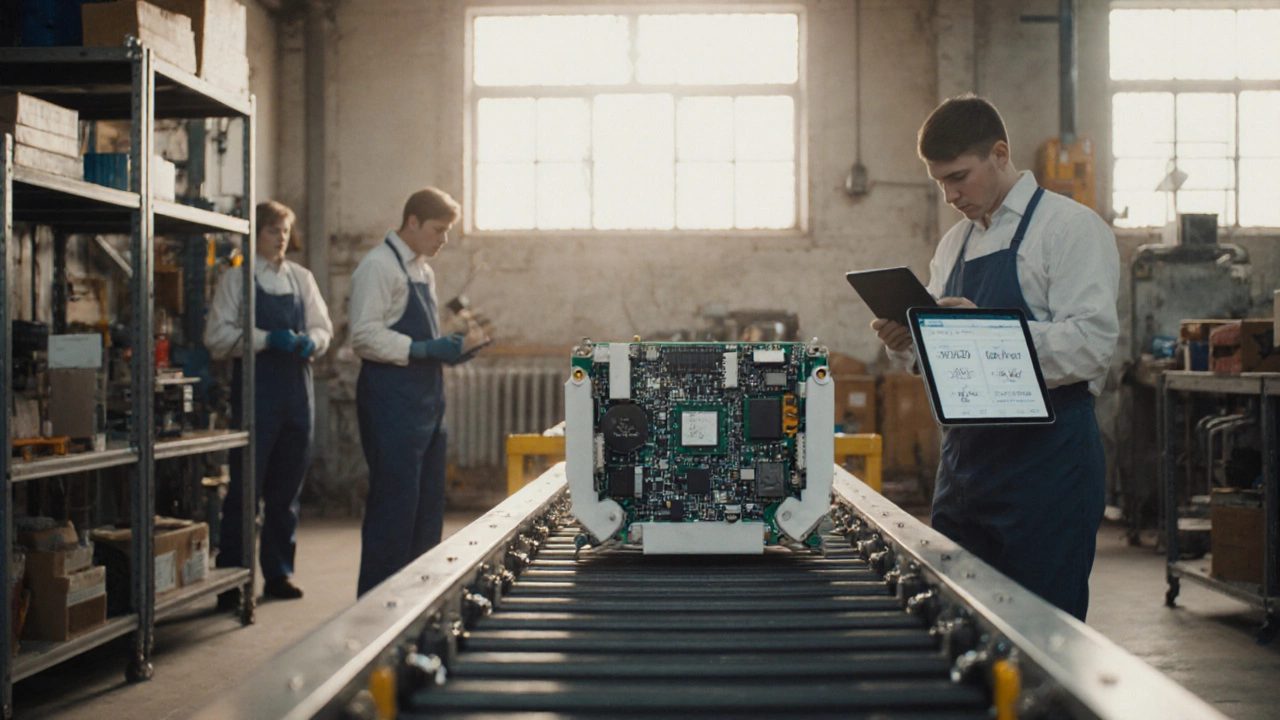Manufacturing Flows: How Products Move from Idea to Shelf
When you think about how something gets made, you’re really thinking about manufacturing flows, the step-by-step path a product takes from raw material to finished good. Also known as production processes, these flows are the hidden backbone of every factory, warehouse, and delivery truck you see. It’s not just about machines—it’s about timing, movement, and decisions made at every stage. A good flow means less waste, lower costs, and products that reach you faster. A bad one? Bottlenecks, delays, and higher prices.
Manufacturing flows don’t happen in a vacuum. They connect to supply chains, the network of suppliers, transporters, and warehouses that feed materials into production. In India, for example, a plastic bottle might start with resin from Gujarat, move to a molding plant in Pune, get packed in Surat, and ship out from Mumbai—all in under a week. That’s a tight flow. Compare that to a car part made in Germany, shipped to the U.S., then assembled in Mexico. Longer flow. More cost. More risk.
Some flows are simple—like making soap in a small workshop. Others, like building an elevator, involve dozens of steps: designing steel frames, sourcing motors, testing safety systems, installing control panels, and final inspection. production line, a structured sequence where products move from one workstation to the next is what makes complex manufacturing possible. SkyWings Elevation Solutions uses this kind of flow every day to build elevators that meet Indian safety standards, deliver on time, and work reliably for decades.
What makes one flow better than another? It’s not just speed. It’s control. Can you track where each part is? Can you swap a supplier without breaking everything? Can you fix a mistake before it hits the next station? The best flows are flexible, visible, and repeatable. You’ll see this in posts about why plastic manufacturing in the U.S. clusters in certain states, how Surat’s textile mills move fabric from loom to export, and why food processing has a strict sequence from raw ingredient to sealed package.
Manufacturing flows aren’t just for big factories. Even small businesses—like someone making soap or printed T-shirts—need a flow. It’s just smaller. The same rules apply: get the right materials in, do the work right, move it out cleanly. The posts below show real examples: how a low-investment manufacturer in the UK picks their steps, why India’s electronics hubs are growing, and what happens when a chemical like phenol runs short and breaks the flow.
There’s no single ‘right’ way to build a flow. But there are clear signs of a broken one. If you’re spending too much time waiting, if parts keep getting lost, if quality drops at the end—you’ve got a flow problem. The posts here give you the tools to spot those issues, understand why they happen, and fix them. Whether you’re running a factory, starting a business, or just curious how your elevator got installed, you’ll find real, practical insights below.
